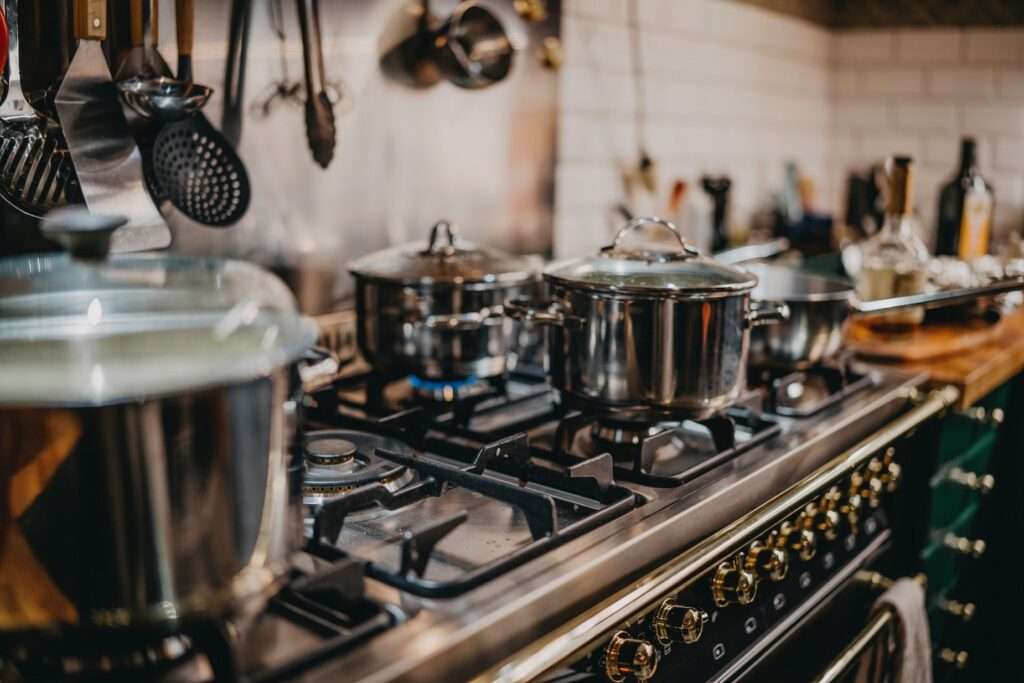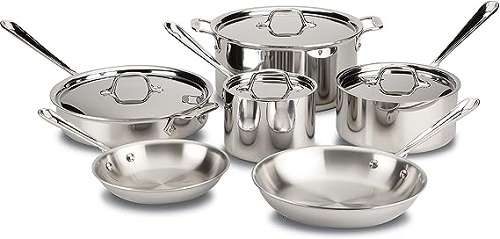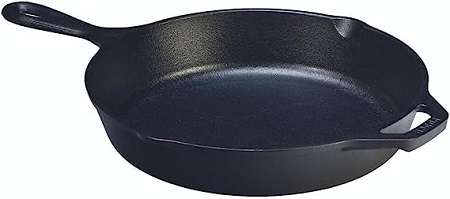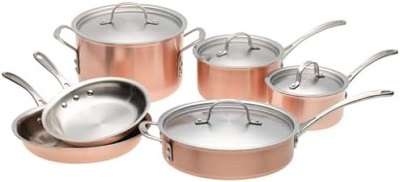The Ultimate Guide to Choosing the Best Beef Cuts for...
Read More
Gas stoves are a beloved choice for home cooks and professional chefs due to their precise heat control and instant temperature adjustments. Investing in the right cookware is essential to harness a gas stove’s potential fully. The suitable pans can significantly impact your cooking experience, ensuring even heat distribution, durability, and compatibility with your gas stove.
In this comprehensive guide, we’ll explore the top considerations for selecting the best pans for gas stoves, so you can make a perfect choice and elevate your culinary endeavors.
Before diving into the specifics of selecting pans for gas stoves, let’s understand why this decision is crucial. Gas stoves provide direct flame heat, varying based on the burner size and intensity.
This makes it imperative to choose cookware that can evenly distribute heat and respond quickly to changes in temperature. The wrong pans can lead to uneven cooking, scorching, or even warping due to rapid temperature fluctuations.
1.Material Matters Regarding gas stoves, materials that conduct heat efficiently are paramount. Stainless steel, cast iron, and copper are popular choices. Stainless steel pans with perfect aluminum or copper core offer excellent heat distribution. Cast iron pans retain heat fine and can provide a steady cooking temperature, ideal for dishes that require slow and even cooking.
3.Size and Shape Consider the perfect size and Shape of the pan for your burner size. Oversized pans can lead to uneven cooking as the outer edges might need more heat. Conversely, a small pan on a large burner can lead to energy wastage. Choose pans that match the burner size for optimal heat distribution.
5.Handle Design Ergonomic handles that stay cool while cooking is essential for safety and convenience. Handles securely attached to the pan are crucial to avoid accidents while transferring or flipping food.
6.Compatibility with Induction Stoves If your gas stove has induction capabilities, opt for pans with a magnetic base, such as pure stainless steel or cast iron. This allows you to use the same pans on gas and induction burners.
So, here are some top recommendations which is recommended by our experts. Also we researched some product based on some customers rev iews . So here it is :

All-Clad is renowned for its high-quality stainless steel cookware with an aluminum core, ensuring even heat distribution. These pans are perfect for searing, sautéing, and simmering on gas stoves.
| Material | Stainless Steel |
| Color | Stainless Steel |
| Brand | All-Clad |
| Size | 10-Piece |
| Handle Material | Stainless,Stainless Steel,Stainless-steel,Steel |

Lodge offers durable cast iron skillets that retain heat exceptionally well. Perfect for achieving a consistent temperature for frying, baking, and roasting on gas stoves.
| Brand | Lodge |
| Material | cast-iron |
| Special Feature | Induction Stovetop Compatible |
| Color | Black |
| Capacity | 10.25 Cubic Inches |

Cuisinart’s nonstick pans are designed with a hard-anodized exterior for fast and even heating. The nonstick interior allows easy food release and cleanup, making it suitable for gas stoves.
| Brand | Cuisinart |
| Material | Stainless Steel |
| Special Feature | Dishwasher Safe |
| Color | Stainless Steel |
| Capacity | 10 Inches |

Calphalon’s tri-ply copper pans combine the heat conductivity of copper with the durability of stainless steel. These pans are perfect for sauces and dishes that require precise temperature control.
| Material | Copper |
| Color | Cooper |
| Brand | Calphalon |
| Size | 10-Piece |
| Handle Material | Stainless,Stainless Steel,Steel |

Anolon offers a versatile stainless steel pan with a copper bottom for efficient heat distribution. The deep design makes it suitable for dishes that require a larger cooking surface.
| Material | Stainless Steel |
| Color | Stainless Steel |
| Brand | Anolon |
| Size | Cookware Set (10 Piece) |
| Handle Material | Stainless Steel |
1. Seasoning Cast Iron If you opt for cast iron pans, season them regularly to maintain their nonstick surface and prevent rusting.
2. Avoid Extreme Temperature Changes To prevent warping and ensure the longevity of your pans, avoid exposing them to extreme temperature changes. Allow them to cool before immersing them in cold water.
3.Hand Washing is Preferred While some pans are labeled dishwasher-safe, hand washing is generally recommended to preserve the quality of your cookware.
1. Precise Temperature Control: Gas stoves allow for quick and accurate adjustments to the flame intensity, providing instant temperature changes. This level of control is beneficial when cooking with pans that require specific heat levels, such as searing meats or sautéing delicate ingredients.
3. Immediate Heat: Gas burners provide instant heat as soon as they’re ignited. This quick heat-up time can save valuable cooking time, making gas stoves convenient for busy cooks.
4.Responsive Cooking: Since the heat can be adjusted instantly, gas stoves are excellent for responsive cooking techniques, such as adjusting the heat to prevent overcooking or changing the temperature rapidly for tasks like simmering or boiling.
6.Flame Visual Cue: The visible flame on a gas stove can serve as a visual cue, helping you gauge the intensity of the heat and adjust it accordingly. This can be especially helpful for cooks who prefer visual indications of temperature changes.
7. Power Outage Cooking: In case of power outages, gas stoves can still be used for cooking as long as the gas supply is available. This can be an efficient advantage in situations where electricity is unavailable.
8. Energy Efficiency: Gas stoves are generally considered more energy-efficient than some electric stoves, as they heat up quickly and cool down faster. This efficiency can result in lower energy consumption and potentially reduced cooking times.
9. Control over Flames: Gas stoves often offer different burner sizes and flame settings, allowing you to use larger or smaller burners as needed for various pan sizes. This adaptability can help you maximize the efficiency of your cooking process.
10. Professional Cooking Techniques: Gas stoves are favored by many professional chefs for their ability to achieve specific cooking techniques, such as flame-searing, flambéing, and wok cooking. These techniques require precise heat control and direct flame contact, which gas stoves can provide.
While gas stoves offer numerous benefits for cooking with pans, it’s important to note that safety precautions should be taken, such as proper ventilation and careful handling of open flames. Additionally, gas stoves require a gas supply, which might only be available in some areas.
The Ultimate Guide to Choosing the Best Beef Cuts for...
Read MoreThe Best Fillet Knife for Saltwater Fish || Extend Kitchen...
Read MorePocket Knife Sets: Essential Tools for Every Adventure Enthusiast A...
Read MoreWestern Kitchen Decor: Charm into Your Culinary Space Source :...
Read More